Released: 30 August 2016
Originally Released: 11 January 2005
Developer: Capcom Production Studio 4
Also Available For: Android, GameCube, Nintendo Switch, Nintendo Wii, Oculus Quest 2, PC, PlayStation 2, PlayStation 3, PlayStation 4, Xbox 360, Xbox Series S, Zeebo
The Background:
Spearheaded by Shinji Mikami, Resident Evil (Capcom, 1996) was one of the seminal titles for Sony’s burgeoning PlayStation. By focusing on atmospheric horror and resource management, the title practically invented (if not massively popularised) the “survival-horror” subgenre. Despite its blocky graphics, clunky tank controls, and B-movie dialogue, Resident Evil was a critical and commercial success that was soon followed by a number of sequels that continued to refine the gameplay, add to the lore, and be equally successful. With the videogame industry firmly in its sixth-generation, one largely defined by the PlayStation 2, Mikami set about producing a fourth mainline entry in his survival-horror franchise, but Resident Evil 4’s development was fraught with issues. There were at least four different versions of the game, one that was so far removed from the franchise’s roots that Capcom spun it out into an all-new action-packed series, one that saw Leon trapped in a haunted castle, one where he was pursued by a hook-handed monster, and one where the player was beset by horrifying visions. Ultimately, these were all scrapped and Mikami took over the directing duties, intent on reinventing the series from the ground up; one major aspect of this was the shift away from static and cinematic camera angles and prerendered graphics to an over-the-shoulder perspective and fully modelled 3D environments and a greater emphasis on player control and action. New enemies were created to fit the new tone, ones that were more intelligent, versatile, and monstrous than Umbrella’s Bio-Organic Weapons (BOWs) and Leon evolved from a rookie cop into a bad-ass agent who spouted one-liners like an action movie star. Initially a GameCube exclusive release thanks to a pre-existing deal between Capcom and Nintendo, Resident Evil 4 was soon ported to multiple platforms; it became the second best-selling Resident Evil title, made it into the Guinness World Records for 2012, and is widely praised as one of the best (if not the best) entries in the franchise despite it paving the way for less acclaimed action-orientated entries. The game is so revered that it later received a high-definition port on modern consoles that included all of the additional game modes and unlockables alongside new graphical and gameplay tweaks before being completely remade in 2023 following the success of Capcom’s previous modern remakes.
The Plot:
After escaping from Raccoon City, Leon S. Kennedy, now a government agent, is sent to rescue Ashley Graham, the daughter of the United States President, from a mysterious cult in rural village in Spain. There, he encounters a group of hostile villagers who pledge their lives to Los Iluminados and have been infected by a mind-controlling parasite known as Las Plagas.
Gameplay:
Unlike every Resident Evil game that came before it, Resident Evil 4 is a third-person action shooter with some light puzzle solving and additional mechanics sprinkled in. The entire complexion of the franchise has been altered; gone are the fixed camera angles and “tank controls”, replaced by fully rendered 3D environments, a much more action-orientated perspective, and a far greater range of movement. The player steps into the familiar shoes of Leon (but he’s changed so much between Resident Evil 2 and Resident Evil 4 that he may as well be a completely different character) and can choose from three different control types, with my preference being the first. In this configuration, X performs an action (such as opening a chest or a door or picking up items or vaulting over ledges), B does absolutely nothing except exit out of menus, Y brings up the map screen, and holding A allows Leon to run indefinitely. You aim with the Left Trigger (a function greatly aided by the inclusion of a laser sight to your weapons) and fire with the Right Trigger. Pressing LT and A will allow you to manually reload and you can perform a quick turn by holding down on the left stick and pressing A. Holding the Left Bumper and pressing RT sees you switch to your knife for close-quarters combat and to save ammunition, but it’s better to use this weapon when enemies are already down to avoid being grabbed. In the years since Resident Evil 2, Leon has become an absolute bad-ass and is now capable of some incredible physical feats. These range from simple things like double tapping X to kick open doors, diving out of windows, or jumping down from greater heights without worrying about damage, to more superhuman feats, such as smashing enemies with a variety of melee attacks when prompted.
This is a great way to conserve ammo; you can fire a shot to stun an enemy, or slash at them with your knife, and then hit X to kick them away so you can follow up with another knife attack. Leon will often be tasked with barricading a room against swarms of enemies, which means pushing bookcases in front of windows, kicking down or raising up ladders with X, or shooting at explosive barrels to even the odds. If grabbed by an enemy, players can avoid or lessen damage by waggling the left stick, but you’ll also be required to pull off some quick-time events (QTEs) to get out of scrapes. When boulders come rolling at you or you make a desperate dive for a cliff edge, you’ll need to rapidly tap X to avoid being crushed; when the Verdugo or other bosses take a swipe at you, you’ll need to duck or dodge out of the way by pressing X and A or LT and RT together, and these skills are put to the ultimate test near the later stages of the game where you need to perform a series of acrobatic dodges to escape a laser trap. While QTEs aren’t as overused as they would be in later games, the developers clearly wanted to make the most of them; you’ll be rapidly tapping X to swim away from a gigantic sea creature or to slash at tentacles grabbing you, you can be sure that they’ll crop up in most boss battles, and QTEs even appear during cutscenes, meaning you can never put your controller down for a second or you’ll risk being stabbed through the heart! Another massive gameplay mechanic of Resident Evil 4 is the partner system; Leon is aided on a couple of occasions by the mysterious Luis Sera, who will help fend off attacking enemies at key moments, but obviously the most prominent partner you’ll have to look out for is Ashley. After rescuing her, Ashley will diligently follow you around and you’ll need to keep her safe to avoid a game over.

Using the Right Bumper, you can command Ashley to stay in place or follow you, which is used to solve certain puzzles such as standing on two pressure pads or pulling two levers simultaneously, but she’s useless at defending herself so you’ll need to have her hide in dumpsters and such to avoid being carried away by enemies. Ashley can be very grating as she is constantly screaming for help and in need of rescue, and there are many times where you’ll have to provide cover fire for her as she turns cranks or searches for keys. Thankfully, you’re not handicapped by her the entire time; in fact, you play more of the game without her than with her, and she does help break up the action a bit in a later part of the game where you get to control her. Ashley carries no weapons but can toss nearby lanterns at enemies with RT and crawl under desks or through small spaces to avoid them entirely, turning cranks to progress and return to her saviour. If she really gets on your tits, though, you can unlock a suit of armour for her that protects her from all attacks and makes her too heavy for enemies to carry away, making her far less of a nuisance and being doubly useful as she acts as a human shield. The map screen is also far more user friendly here; you can clearly see locked and unlocked doors, treasure, save points, and other areas of interest, and your next destination, which makes navigation much simpler, something aided by the game largely being much more linear than its predecessors. Still, while much of the gameplay has been altered to make use of the new presentation and format, many of the classic Resident Evil tropes remain. You’ll be exploring areas for items, documents to expand the story, and keys to unlock doors; often, you’ll need two or more items, insignias or plates or the like, to complete a puzzle and progress onwards and you’ll be unlocking or clearing pathways to create shortcuts as you explore. You’ll sometimes need to examine, combine, or encrypt key items to progress, or activate (or deactivate) security protocols to acquire the items you need, awakening any dormant enemies in the area. Other times, you’ll be exploring maze-like areas, such as a particularly ominous hedge maze, raising a cannon to blast open a door, or receiving some much-needed air support from a helicopter.
There are several familiar puzzles here, too, such as pushing statues onto pressure pads, angling mirrors to reflect lasers, picture puzzles, turning dials, and merging coloured lights to acquire new items or open new paths. These usually aren’t too difficult, and the solutions are normally provided by inspecting the immediate environment, or with a bit of trial and error. In addition to pushing crates into water to create platforms or off lifts to progress upwards and turning levers to open doors or activate traps, Leon is now able to jump across gaps, smash off padlocks, ride zipwires, and ride around in minecarts, blasting at barricades and enemies alike as he goes. Vehicles actually crop up a few times in the game, with you needing to shoot the drivers of trucks to avoid being crushed, defending Ashley as she ploughs through a facility in a bulldozer, riding a speedboat across a lake as a sea creature stalks you, and a particularly aggravating final section where you must race away from the island on a ski boat, flying over ramps and desperately avoiding falling rocks at high speeds. Not only can more enemies than ever easily swarm you, but the environments are littered with hazards, from annoying beartraps and explosive trip wires, to bursts of flame, swinging axes, and spiked ceilings. Some of these can be used against your enemies, but most you’ll either need to avoid with a QTE or shoot at panels to stop them from splattering you across the wall. While Leon is afforded more resources than ever, you still need to watch your ammo and be mindful of your stock of healing items; Leon can only carry so much, even with a fully upgraded attaché case, and you won’t have the benefit of Item Boxes to help you out here so it’s best to use the environment wherever possible, flee to higher ground, and force enemies into a narrow space to easily pick them off with as few shots as possible.
Graphics and Sound:
Without question, Resident Evil 4 was the best-looking Resident Evil we’d seen at that point. While I think the remake of the first game actually holds up better now, thanks to the restrictive angles and clever use of lighting, there’s no doubt that this was a dramatic shift away from the limitations of the previous generation and into a new era for the franchise. No longer restricted to tight corridors or prerendered environments, Leon explores some surprisingly large areas, with much of the game taking place outside and in a location decidedly removed from the urban trappings of its predecessors. Leon is now a large, versatile 3D model who can interact with his environment and enemies in fun new ways; from backflipping out of danger and kicking the heads off his attackers to simple things like being able to move and aim in all directions, the player had never had some much freedom in a Resident Evil title before…it’s just a shame you can’t move and shoot at the same time, which can make combat a little clunky, and the camera is a little too close at times, meaning it can be difficult to see what’s ahead of you.
Still, the game looks gorgeous; so much so that I really don’t understand the logic of prioritising a remake of it over the far more polygonal Resident Evil – Code: Veronica (Capcom Production Studio 4, 2000). Taking place in a desolate Eastern European nation, the game is awash with a gothic aesthetic that is both familiar and new. Leon explores barren, backwater villages and farmlands, an ominous graveyard, descends down into a number of sewers and catacombs, and even ventures into a dank mine and a dig site to uncover the origins of the Las Plagas parasite. Outside environments are plentiful, with Leon venturing around the outskirts of towers and castles so the game can impress with its graphical scope; crows, wild dogs, and signs of decay and the Los Illuminados’ influence are everywhere, giving even the smallest rural areas a sense of menace. Once inside the churches, castles, and stately manors of the malevolent cult, the game becomes a little more familiar; once again, we’re treated to vast and elaborate rooms filled with paintings, suits of armour, dining tables and joined by corridors bathed in moonlight. You’ll venture into disgusting kitchen and waste disposal areas filled with dead or dismembered bodies, wade through wretched water and creep through rusted, wrecked prisons and crumbling catacombs, past vast lakes, waterfalls, and waterwheels in the surroundings mountains, and even into industrial areas filled with molten metal, shimmering heat effects, and corroded elements.
After battling through the boobytraps of the Los Illuminados’ grandiose castles, you’ll descend into dark tunnels filled with giant, skittering bugs, heavily fortified bases surrounding the Los Illuminados’ island, and eventually reach a disused, high-tech facility not unlike those Umbrella established under mansions and cities in the previous games. Here, you’ll be treated to bloodstained walls, trashed laboratories, and bizarre Las Plagas experiments, which all burst or shamble to life in the most horrific ways. Largely, there’s very little distinction between the CG cutscenes and the in-game graphics, especially in this remastered version of the game; while the same can’t be said of Ada Wong’s unlockable chapter, whose cutscenes are as low quality and blurry as they were on the PlayStation 2 version, the main game looks crisp and clear…perhaps a little too clear at times, though there are some suitably dark and spooky areas to help balance the lighting. The action is constantly interrupted by radio conversations between Leon and his allies and enemies, which really gives a sense of how much Leon has changed; he’s no longer a rookie cop and is instead a flirtatious, cocksure action hero who trades barbs and drops one-liners as often as he does chat up lines. The game plays its dialogue very tongue in cheek; while not as clunky and awkward as the voice acting in the original game, it’s as though the direction here was to treat it like a B-movie from the off, resulting in a strange mix of terror and ridiculousness at times. The music is suitably ominous and still used to great effect; you’ll always know when you’re in a save room or area or near the merchant, for example, and the music generally only kicks in when enemies or hazards are nearby and will fade out once the danger has passed. Enemies also shamble about, dragging their weapons across the floor, and shout when they spot you; they’ll chant strange phrases and mutter their loyalty to their masters even as they dissolve into a puddle of goo, making for far more visually interesting enemies than moaning zombies.
Enemies and Bosses:
Speaking of which, another way Resident Evil 4 separates itself from its predecessors is in the complete absence of zombies and Umbrella’s bio-organic weapons and viruses. Instead, every enemy in the game is infected with an ancient, mind-controlling parasite that makes them slaves to the Los Illuminados’ power and grants certain superhuman abilities. Your most common enemy are the Ganados; faster, more vocal, and more coordinated than zombies, these infected villagers will rush at you, try to eat you, and attack you with melee weapons from afar or up close. Many hold flaming torches, which you can use to set them on fire; others toss sticks of dynamite, which you can also use to thin out the hoards. You’ll also encounter robed variants who wield crossbows, man catapults, and carry maces, large wooden shields, and even scythes that they hurl at you! Soldier variants are further protected by armour and helmets and carry rocket launchers; additionally, Ganados’ heads will explode and tentacled parasite will swipe at you, or a Facehugger-like variant will pounce at you from the floor. Enemies also man fire-breathing statues and the local wildlife has also been infected, meaning you’ll come across some John Carpenter-esque wolves rippling with tentacles. The Plagas also control heavy suits of armour in the castle, but you can make surprisingly good use of the flash grenade against most enemies, in addition to shooting them into pits of molten metal or over the side of cliffs, blowing them up with flaming or explosive barrels, and you can even shoot their meat cleavers out of the air if you’re quick enough.

It doesn’t take long for the enemy variety to ramp up and become more formidable, though. You’ll come up against a massive Ganado wielding a Gatling Gun on more than one occasion, or a Ganado in a red robe and sporting a ram’s head will mount a large rotary cannon and cut you down if you can’t make good use of cover to get a shot at him from behind. Raging, masked Ganados rush at you with chainsaws and can one-shot you if you don’t keep your distance and blast them with your heavy artillery, and you’ll even have to battle a few claw-and-armour clad psychopaths who charge at you, swiping madly with their clawed appendages, and can only be damaged by targeting the writhing parasite on their back. These Garradors are usually fought in an enclosed space as other enemies swarm around you, a common theme in Resident Evil 4 as the game loves to send a gaggle of various enemies at you, forcing you to stay on the move and switch up your weapons accordingly. Giant mutated locusts and bugs also crop up: some will hover about, darting at you from above; others skitter across the floor to slash at you; and some are invisible and will leap onto you to vomit acid over your face! By far the most disturbing enemy in the game is the Regenerator, a slender, ashen, zombie-like creature instantly recognisable by its distinctive and chilling breathing. As their name suggests, these wretches constantly regenerate, necessitating the use of high-powered explosives or an infrared scope to target the pulsating boils on their body. Their spiked variant, the Iron Maiden, is even more fearsome, exploding in an array of spikes as it ungainly shuffles after you, so it’s best to either avoid these creatures or make use of any nearby explosives to put them down, but keep your distance as they tend to explode in a shower of guts upon death. Many of these enemies are introduced in such a way that they could count as mini bosses; Doctor Salvador and the Bella Sisters, especially, mark key moments in the game that indicate how dangerous these enemies can as they can take your head off in one move!
You’ll also have to contend with some far bigger enemies, each one taking the disgusting body horror of the franchise in new, startling directions. One of the first is the gargantuan, troll-like El Gigante, a lumbering beast you first fight in an enclosed arena near the opening village and later battle alongside a second, similar beast inside a factory. Generally, these creatures charge at you and grab and squeeze you, things you’ll need to rely on QTEs to avoid; they also swipe, pound, and swing trees at you but are pretty slow so you can usually get around them easily enough. In the first battle, you’ll also be aided by a local dog if you chose to save it; in the second, you can drop one into a pit of molten metal, but you still need to avoid getting too close or you’ll be dragged under. Otherwise, unload on El Gigante’s face until the parasite explodes from its back; attack this until it bursts, and you’ll finally put it down, but keep your wits about you as you’ll need to hit LT and RT to avoid being crushed afterwards. When you reach the lake, don’t fire your gun into it (unless you want an Achievement…) because Del Lago will eat you up! This monstrous alligator…thing…attacks your little speed boat, requiring you to toss your infinite supply of harpoons at it and mash X whenever you’re knocked overboard. This can be very finnicky as it’s hard to line up your shot and the cooldown time between throws is substantial; also, don’t get complacent as you’ll need to mash X to avoid being drowned when it snares you with its tentacle. Before you can leave the Godforsaken village, you’ll battle Bitores Mendez inside a burning barn. This spider-like monstrosity slashes at you with his insectoid limbs and tentacles absorbing damage much like Mr. X before his torso completely disconnects from his body and scurries about the place, making him a difficult target to hit; thankfully, you can clamber up to a higher level and make use of the various explosives scattered about the place. When in the processing plant, you’ll constantly have to dodge the Verdugo’s spiked tail as it whips at you from above and below; after you restore power and wait for the lift to arrive, it will attack with lightning fast speed, putting your QTE skills to the test. The Verdugo seems to be completely impervious to all weapons; all you can to is topple over the nearby cannisters of liquid nitrogen to freeze it, buying you time and allowing you to briefly scare it away.

A similarly impervious Las Plagas monster awaits in an elaborate cage maze down in the tunnels; “U-3” is this scorpion-like mess of limbs and tentacles that you must dodge and scare away while activating consoles to drop each section of the cage. Once done, it will attack you directly on a cliff edge; here, it will burrow underground to slash at you, but you can make use of explosive barrels to damage it and trap it in an enclosed space to avoid being cleaved in two by its pincer! Resident Evil 4 also introduces a rival for Leon: Jack Krauser, a mercenary for hire who initially attacks with his knife, forcing you to win QTEs to avoid being unceremoniously stabbed to death. Later, he shoots explosive arrows, a machine gun, sends his explosive drones after you, and leaps out to attack you as you search for three tablets in some ruins. This culminates in a one-on-one boss battle where Krauser mutates a knife-like appendage on his arm which he uses to slice at you and shield against your attacks. You’re given about three minutes to defeat him and escape before the area explodes; your best bet is to target his legs and switch to the knife, which does far more damage in this battle than in any other. Leon is also mocked all throughout by the diminutive Ramon Salazar, who largely sends his minions and even a giant statue of himself after you rather than face you head-on. After scaling his tower, however, he’ll mutate into this massive, plant-like monstrosity and try to swat you with his huge spiked tentacles. Like in the battle against “G”, you need to target Salazar’s pulsating eye to deal damage and briefly expose him from his protective cocoon so you can fire at him with your heavier weaponry, ideally the rocket launcher for an instant kill. Finally, after dogging your progress and killing Luis, you’ll confront the leader of the Los Illuminados cult, Osmund Saddler, at a construction site; here, he transforms into a four-legged abomination that also sports eyeball protrusions that you must shoot to stun him and allow you to strike his exposed central eye. Eventually, Ada will drop a rocket launcher into the arena for you to finish him off, but this can be a tough fight if you’re low on ammo, especially as you need to rely on the knife to damage the main eye and you’re given less than three minutes to escape the island afterwards.
Power-Ups and Bonuses:
As ever, Leon can restore his health using first-aid spray and herbs and you can combine these to restore more health or his and Ashley’s health meters. You also won’t need to worry about being poisoned here, though do be wary when smashing open crates for goodies as you’ll sometimes be attacked by a snake! Almost every enemy you defeat will drop some goodies, such as herbs, ammo, or pesetas, the local currency. Smash open jars, crates, and barrels to reap the same rewards and you’ll often also find high value collectibles in the same way or twinkling at you around the environment. These can be sold to the merchant, who you’ll encounter many times throughout the game, usually right next to a save point; saving is once again done manually at typewriters, though you no longer need to worry about ink ribbons and the game does contain checkpoints, so you don’t have to start all over from your last save point. The merchant will buy almost anything off you and will sell you new weapons, ammo, health items, and upgrades to your outfit and weapons.
Occasionally, you’ll find new weapons and upgrades in cases or lockers around the environment but, for the most part, they’re also purchased from the merchant. Every weapon can be “tuned up” at the cost of more pesetas, allowing you to increase their damage, reload time, capacity, and firing speed, though the cost of this tune up increases each time. It’s also worth waiting for better weapons to become available; there’s little point in wasting money upgrading the standard shotgun, for example, when a more powerful one becomes available later on that is more worth your investment. Leon has access to a variety of familiar weapons, from a standard pistol (which can be upgraded to fire bursts), shotguns for close range combat, machine guns (which can also be fitted with stocks to improve handling), sniper rifles (which can be fitted with a better scope or an infrared attachment), and a variety of grenades (standard explosive, incendiary to set enemies alight, and flashbangs to stun enemies and instantly burst parasites). You’ll also get access to more heavy-duty weapons, such as the armour-piercing magnum, the mine launcher, and the rocket launcher; while the mines take a few seconds to explode and the rocket launcher is a bit unwieldy as it forces you into a scoped perspective, these are the most powerful weapons and make short work of any enemy, even the game’s large and grotesque bosses.
Additional Features:
There are twelve Achievements up for grabs in Resident Evil 4, seven of which are awarded simply by playing through the game and clearing each chapter. If you shoot the water and draw out Del Lago, you’ll snag another at the cost of Leon’s life; another has you holding out against the villagers at the start of the game until Dr. Salvador shows up; and another is given for beating the game on the far harder “Professional” mode. Beating the game on any difficulty will also unlock two alternative costumes for Leon, one a dapper film noir outfit and another his classic cop uniform, which also nets you an Achievement. The final Achievement is earned by winning all twenty-five bottle caps in the various shooting galleries found throughout the game; here, the merchant supplies you with a sniper rifle and another weapon and you’re tasked with shooting all the targets on the range to earn your prize, which is easier said than done if your aim is as bad as mine! There are also several blue medallions found all over the game; shooting them will unlock new weapons that the merchant will gift to you for free, which can be helpful on your first playthrough.
Beating the game also unlocks the “Assignment Ada” mini game; in this game, which is similar to the “4th Survivor” bonus game for Resident Evil 2, you control Ada on Saddler’s island and must track down five Las Plagas samples in one playthrough, managing your ammo and health without the benefit of save points. Ada is also playable in the “Separate Ways” campaign, a five-chapter side story to the main game which fills in the gaps around Ada’s involvement in the plot. Ada plays exactly like Leon except she’s faster, far more graceful in her moves, has access to a powerful bow gun and a grapple to reach higher areas faster, and takes more damage when attacked. In this mode, you’ll play through rejigged sections of the main game and even battle similar bosses, such as El Gigante and Krauser, and endure a unique fight against Saddler in his human form. Additionally, you can play the “Mercenaries” mini game, even playing as different Resident Evil characters like HUNK and Albert Wesker, in which you must defeat enemies to score points against a time limit in a fun arena shooter. Finally, you can view files and movies from the main menu and unlock additional costumes and weapons by clearing these game modes, though there are sadly no Achievements tied to them.
The Summary:
I can totally understand why so many people rave about Resident Evil 4. This was only my third playthrough of the game, and the second of this version; I played on a cleared game, so I had access to Ashley’s super useful suit of armour, upgraded weapons, and the infinite rocket launcher for the last half of the game and I still had an absolute blast. I’m a big fan of the original games, their focus on exploration, puzzle solving, and resource management and it’s true that a lot of the survival/horror aspects have been lost in this more action-oriented game. However, they’ve been replaced by a creepy, disgusting body horror; some genuinely thrilling moments thanks to the QTEs happening during cutscenes; and the spirit of the franchise is kept well alive even though we have better controls, a better camera, and far better graphics. Leon has always been my favourite Resident Evil character; while he’s a very different person here, this game went a long way to solidifying how cool he is, and I enjoyed his new abilities and gung-ho attitude. Even the annoying parts, like Ashley constantly being in danger, the swarms of enemies, and the occasional instant deaths are fun to replay; even now, some aspects catch me off-guard, like the trucks speeding towards you or Krauser’s sneak attacks. I may not fully understand why the game needs to be rebuilt from the ground up but I can understand the logic behind it; Resident Evil 4 is a popular and successful entry in the franchise, on that redefined the series for better or worse and which could benefit from a few modern tweaks, but at the same time this version still stands up as one of the most enjoyable in the entire franchise.
My Rating:
Great Stuff
What did you think about Resident Evil 4? When did you first play the game and how do you think it holds up today? Were you put off by the new perspective and controls scheme or did it reinvigorate your love for the franchise? What did you think to Leon, the changes to his repertoire and character, and the dynamic between him and the other characters? Were you a fan of the QTEs and Ashley? Did you ever collect all the bottle caps? Which Resident Evil videogame, character, monster, or spin-off is your favourite, and would you like to see a return to the original tank-control era of the franchise? Whatever you think, feel free to leave your thoughts down below.













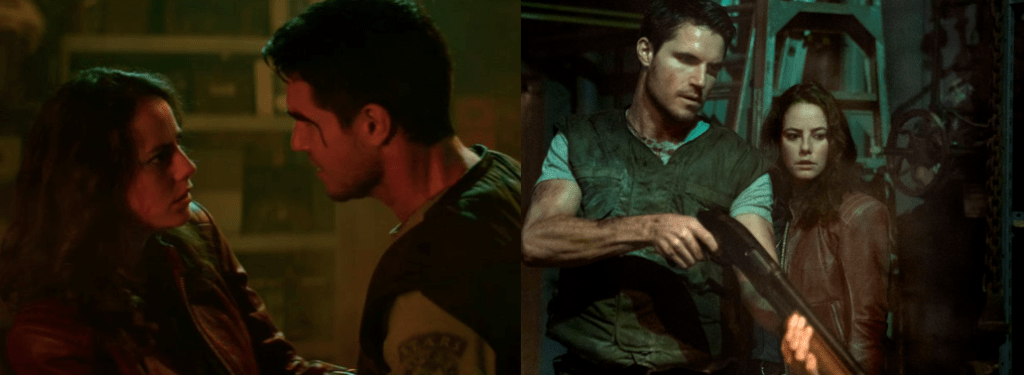

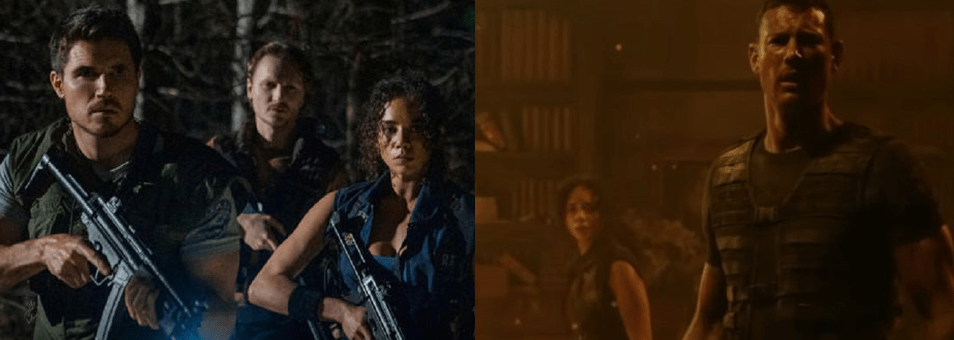









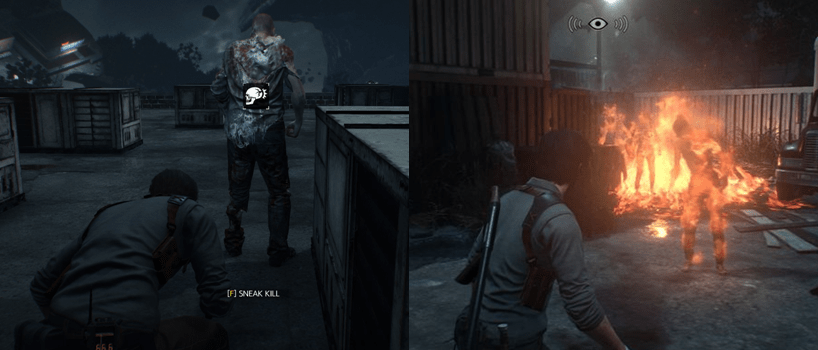

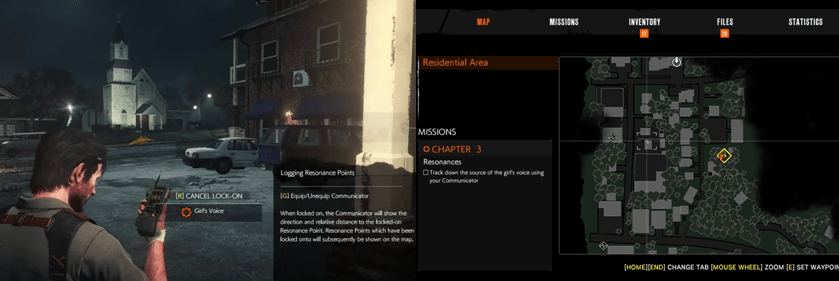


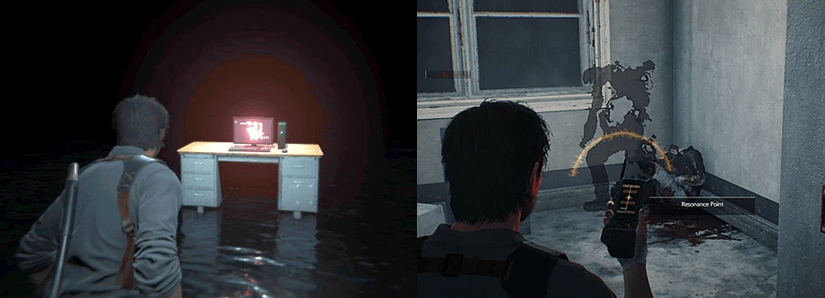







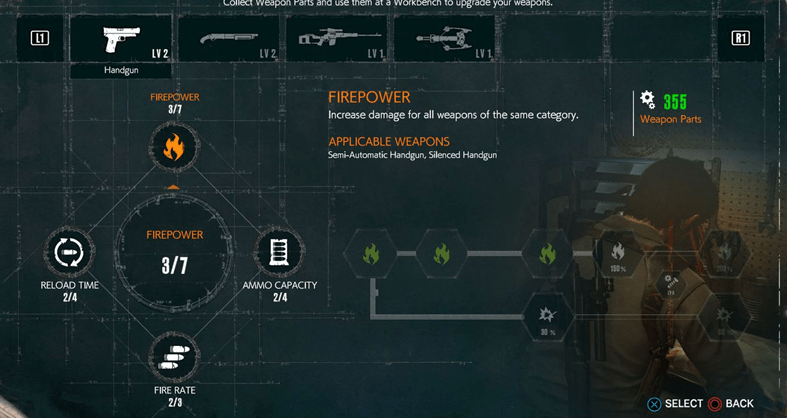





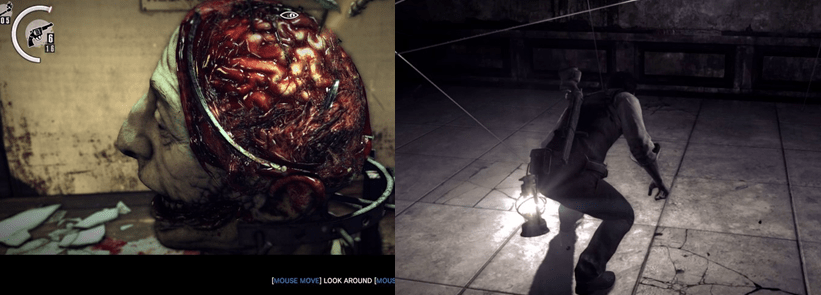




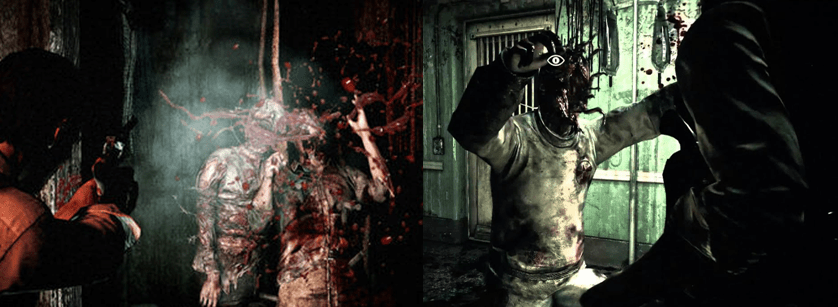























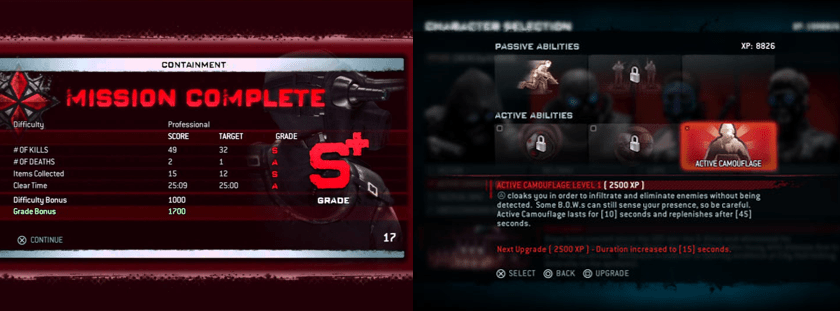





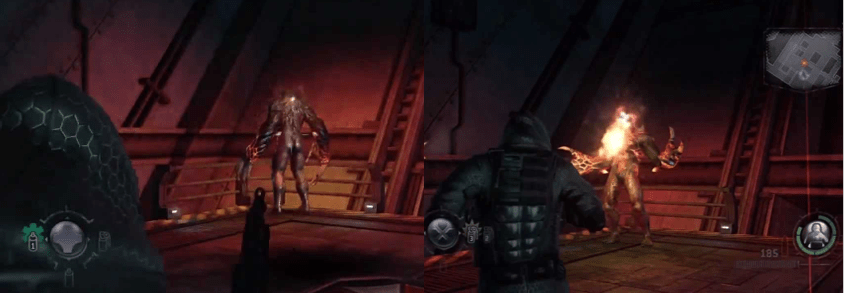

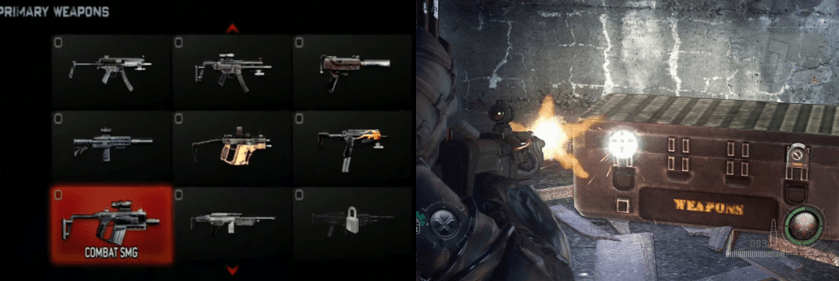





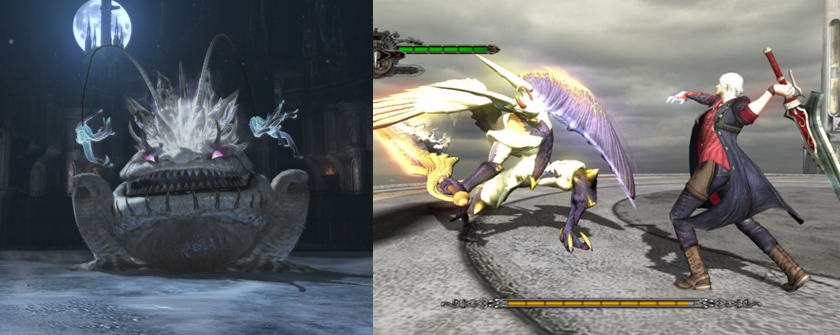


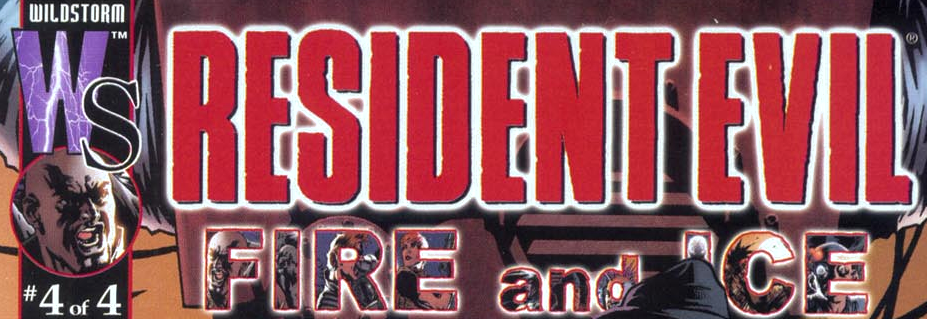










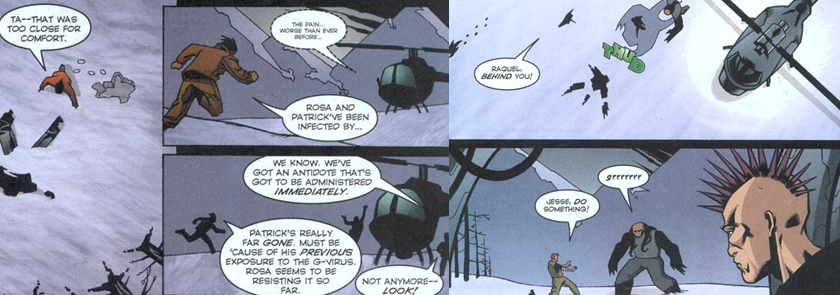













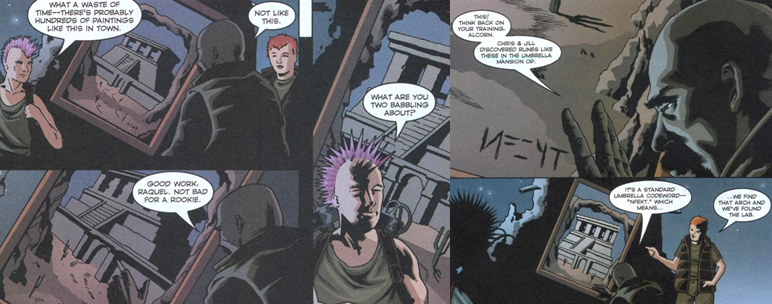




You must be logged in to post a comment.